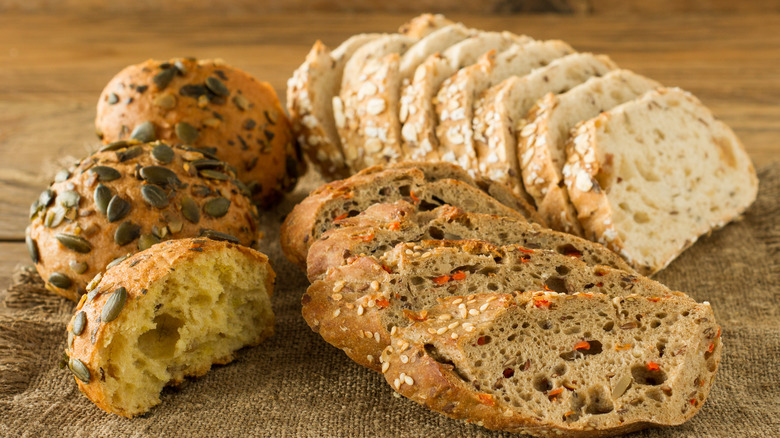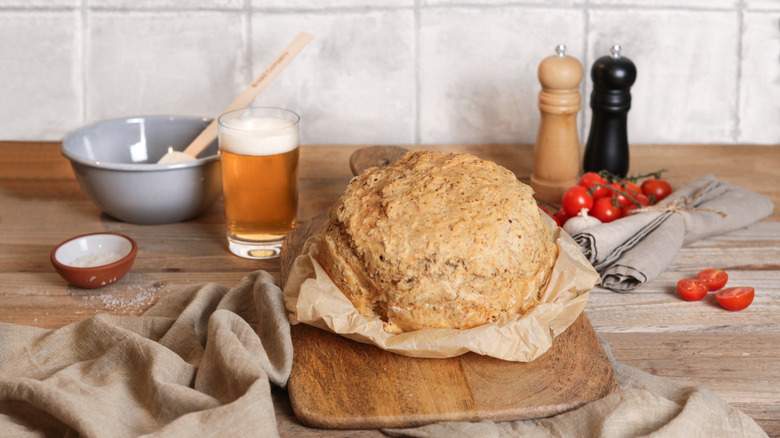The Boozy Ingredient Swap For Homemade Gluten-Free Bread
Gluten-free bakers have gotten crafty discovering new and innovative techniques to create soft, spongy bread loaves while omitting gluten, a key ingredient. In traditional breadmaking, gluten, which is a naturally occurring protein in wheat flour, acts as a binder to fortify the dough. Gluten-free dough, lacking this component, also lacks the ability to stretch and hold the air bubbles needed for the bread to rise. This often results in loaves becoming crumbly, dry, or even stale in texture.
Although there are several passable gluten-free bread options on the market, those with gluten sensitivity or allergy, and those diagnosed with Celiac disease may have to take matters into their own hands and bake gluten-free bread at home. If you've embarked on this journey before, you know that there are significant adjustments needed to give gluten-free bread the same consistency and texture as its traditional counterparts often requiring obscure starches and gums. If the trial-and-error cycle has you scratching your head, we've got just the ingredient you've been needing, and you may even have it in your fridge.
Beer contains many of the same core ingredients of bread (yeast, grain, and water), but most importantly for gluten-free bread-making, it contains carbonation, which makes it a great substitute for water in the recipe. This carbonation helps produce light, fluffy, and airy bread without sacrificing flavor.
No Gluten? No Problem.
Gluten serves as a leavening agent that holds bread dough together and plays a critical role in trapping gas bubbles during fermentation, which gives dough its ability to rise and creates a loaf's intricate internal webbing. To mimic this chemical reaction in gluten-free bread recipes, a gaseous component, such as beer, is necessary to emit enough carbon dioxide to force the dough to rise. Of course, in a recipe omitting gluten, the beer itself must also be gluten-free.
Gluten-free and gluten-reduced beers are rapidly gaining in popularity as more people adopt the diet and seek out alternatives to traditional barley-based brews. As this market expands, so do the options on grocery store shelves, and several gluten-free beer brands have developed a variety of beer styles that are safe to consume as part of a gluten-free diet. However, it is important to keep in mind that the desired flavor of your bread will determine what beer style you should choose to incorporate. Bakers should opt for a brew that is average in hoppiness, carbonation, or alcohol content to avoid overpowering the dough.
It doesn't take much to become a gluten-free bread-baking pro ... just pop a top and let the beer do the rest!

